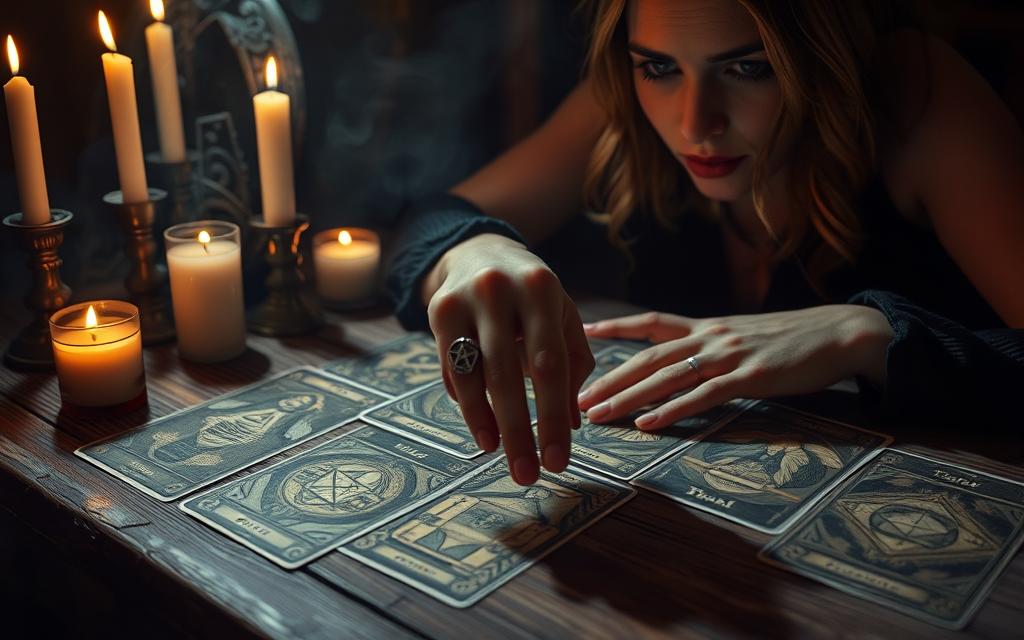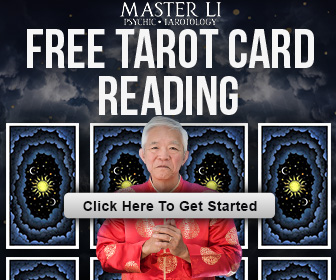The debate surrounding tarot cards has long been a topic of interest, with some associating them with witchcraft, while others see them as a legitimate form of divination.
For centuries, tarot card reading has been used as a tool for gaining insight and guidance. Despite its popularity, misconceptions about its connection to witchcraft persist. This article aims to explore the history, symbolism, and practices surrounding tarot card reading, shedding light on its true nature and dispelling common myths.
By delving into the world of tarot cards, we hope to provide a clearer understanding of this ancient practice and its role in modern times.
Table of Contents
The Origins and History of Tarot Cards
The story of tarot cards begins in 15th Century Europe, where they were initially used as playing cards. Over time, these cards evolved to become the divinatory tools we know today.
Early Beginnings in 15th Century Europe
Tarot cards originated in 15th Century Europe, specifically in Italy, where they were used for playing games. The earliest recorded use of tarot cards dates back to the 1440s in various Italian city-states, such as Milan and Ferrara. These early decks were hand-painted and featured allegorical and symbolic imagery.
Evolution from Playing Cards to Divinatory Tools
As tarot cards spread throughout Europe, they began to be associated with fortune-telling and divination. By the 18th century, tarot decks started to be used for more than just playing games. The French and Italians were among the first to link tarot cards with esoteric and mystical practices. For a deeper understanding of tarot and its uses, visit this resource.
Key Historical Figures in Tarot Development
Several key figures have contributed to the development and popularization of tarot cards. Notable occultists like Eliphas Lévi and Arthur Edward Waite played significant roles in shaping modern tarot. Their works and interpretations helped to standardize tarot symbolism and practices.
| Century | Event | Key Figures |
|---|---|---|
| 15th | Tarot cards originated in Italy | Unknown artists and nobles |
| 18th | Tarot associated with divination | French and Italian occultists |
| 19th-20th | Tarot popularized in occult practices | Eliphas Lévi, Arthur Edward Waite |
Understanding the Tarot Deck Structure
Delving into the tarot deck’s composition reveals its intricate design. A standard tarot deck is composed of 78 cards, each with its own symbolism and significance.
The Major Arcana
The Major Arcana consists of 22 trump cards that represent major life themes, archetypes, and transitions. These cards are numbered from 0 (The Fool) to 21 (The World) and hold deep symbolic meaning.
The Minor Arcana
The Minor Arcana is made up of 56 cards, divided into four suits similar to a regular playing card deck. The suits are typically Wands, Cups, Swords, and Pentacles, each representing different aspects of life.
Court Cards and Their Significance
Court cards, including Kings, Queens, Knights, and Pages, represent personalities, roles, or aspects of oneself. They can signify people in one’s life or embody certain characteristics.
| Card Type | Description | Example |
|---|---|---|
| Major Arcana | Major life themes and archetypes | The Fool |
| Minor Arcana | Everyday situations and emotions | Five of Cups |
| Court Cards | Personality aspects or people | King of Swords |
Tarot as a Divination Practice
Delving into the realm of tarot card reading reveals a rich tapestry of divination practices and interpretations. Tarot cards have been used for centuries as a tool for gaining insight into an individual’s life, challenges, and future possibilities.
How Tarot Reading Works
Tarot reading involves the interpretation of a deck of cards, each with its own symbolism, imagery, and meaning. The process typically begins with the querent shuffling the deck, followed by the reader laying out a specific pattern or spread of cards.
The reader then interprets the cards based on their position in the spread, their relation to each other, and the question or area of life being explored. This intuitive process requires a deep understanding of the tarot symbolism and the ability to synthesize the information presented by the cards.
Common Spreads and Their Meanings
Tarot spreads are predefined patterns in which the cards are laid out. Each spread is designed to answer specific types of questions or provide insight into different areas of life. Some common spreads include the Three-Card Spread for understanding past, present, and future influences, and the Celtic Cross Spread for a more in-depth analysis of the querent’s situation.
| Spread Name | Purpose | Number of Cards |
|---|---|---|
| Three-Card Spread | Past-Present-Future Insight | 3 |
| Celtic Cross Spread | In-depth Situation Analysis | 10-12 |
| Relationship Spread | Understanding Dynamics | 5-7 |
Intuition vs. Learned Interpretation
The art of tarot reading walks a fine line between intuition and learned interpretation. While a reader may develop their interpretation skills through study and practice, intuition plays a significant role in connecting the symbolism of the cards to the querent’s specific situation.
Experienced readers often blend their knowledge of tarot symbolism with their intuitive insights to provide a nuanced and personalized reading.
Is Tarot Cards Witchcraft? Examining the Connection
Examining the historical and contemporary contexts of tarot cards reveals a nuanced relationship with witchcraft and divination. The use of tarot cards has been intertwined with various spiritual and occult practices, leading to a complex association with witchcraft.
Historical Associations with Occult Practices
Tarot cards have historically been linked to occult practices, with their origins in 15th-century Europe gradually evolving into a tool for divination. The occult connection was further solidified in the 18th century when French occultists began to associate tarot cards with mystical knowledge and esoteric traditions.
The tarot deck’s structure, including the Major and Minor Arcana, has been interpreted in various ways, contributing to its association with occult practices. Some key historical figures have played a significant role in shaping this connection.
- Antoine Court de Gébelin, who linked tarot to ancient Egyptian wisdom.
- Éliphas Lévi, who further popularized the connection between tarot and occultism.
- Arthur Edward Waite, whose tarot deck design remains popular today.
Tarot in Modern Witchcraft and Wicca
In modern times, tarot cards have become a staple in some witchcraft and Wiccan practices. Many modern witches and Wiccans use tarot as a tool for divination, meditation, and self-reflection. The flexibility of tarot interpretations allows it to be adapted to various spiritual practices.
Some key aspects of tarot in modern witchcraft include:
- Using tarot for gaining insight into personal situations and future events.
- Incorporating tarot into rituals and spellwork for enhanced focus and intention.
- Employing tarot as a means of connecting with the subconscious and the collective unconscious.
Distinguishing Between Divination and Magical Practice
It’s essential to distinguish between divination practices, such as tarot reading, and magical practices. While both are used in witchcraft and Wicca, they serve different purposes. Divination is primarily about gaining insight and understanding, whereas magical practice involves actively seeking to change circumstances or outcomes.
Tarot cards can be used in both contexts, but their primary function is as a divinatory tool. Understanding this distinction helps clarify the role of tarot cards within witchcraft and broader spiritual practices.
Psychological Perspectives on Tarot Reading
Tarot reading, often viewed through the lens of mysticism, also has a profound psychological dimension. This aspect is particularly evident in the symbolic language of the tarot cards, which taps into the subconscious mind.
Carl Jung and Archetypal Symbolism
Carl Jung’s theory of archetypes is particularly relevant to understanding tarot symbolism. Jung posited that certain symbols and images are universally present in the collective unconscious, a concept that is reflected in the tarot’s use of archetypal figures and themes. For instance, the Fool card represents new beginnings, while the High Priestess embodies intuition and wisdom.
Tarot as a Tool for Self-Reflection
Tarot reading can serve as a powerful tool for self-reflection, encouraging individuals to explore their thoughts, feelings, and motivations. By interpreting the tarot cards, individuals can gain insights into their current situation and potential future paths. This process can be particularly helpful for those seeking personal growth or navigating significant life decisions.
The Barnum Effect in Tarot Readings
The Barnum effect is a psychological phenomenon where individuals give high credence to general or vague descriptions, believing them to be accurate and specific to their situation. Tarot readings often utilize broad, archetypal descriptions that can be interpreted in various ways, making them susceptible to the Barnum effect. For more information on the validity of tarot readings, you can visit https://trueyoutarot.com/are-tarot-cards-real/.
Understanding the psychological aspects of tarot reading can enhance its utility as a tool for personal insight and growth. By recognizing the interplay between tarot symbolism and psychological principles, individuals can deepen their understanding of themselves and the world around them.
Religious and Cultural Viewpoints on Tarot
The perception of tarot cards varies significantly across religious and cultural landscapes. This diversity in viewpoints reflects the complex and multifaceted nature of tarot cards, which have been interpreted in numerous ways throughout history.
Different religious groups have distinct perspectives on tarot cards, often influenced by their beliefs about divination and the supernatural. For instance, some Christian denominations view tarot cards as a form of divination that is contrary to their religious teachings.
Christian Perspectives on Divination
Christian perspectives on tarot cards are varied, but many view divination as a practice that is incompatible with Christian teachings. Some Christians see tarot cards as a tool of the occult, which they believe is forbidden by biblical teachings. Others may view tarot readings as a form of entertainment rather than a serious divinatory practice.
- Some Christian denominations condemn tarot cards as they are seen to be in conflict with biblical teachings.
- Others may use tarot cards as a tool for meditation and reflection, stripping them of their divinatory context.
Secular and Spiritual Approaches to Tarot
In contrast to religious perspectives, secular and spiritual approaches to tarot cards focus on their symbolic and psychological significance. Many people use tarot cards as a tool for self-reflection, personal growth, and exploring one’s subconscious mind.
Key aspects of secular and spiritual tarot practices include:
- Using tarot cards for introspection and self-awareness.
- Interpreting tarot cards as symbols of archetypes and universal themes.
Cultural Variations in Tarot Practice
Cultural variations in tarot practice are significant, with different cultures adapting tarot cards to their unique belief systems and practices. For example, some cultures may incorporate traditional folklore and mythology into their tarot readings.
The diversity in tarot practices across cultures highlights the adaptability and versatility of tarot cards as a tool for divination, self-reflection, and spiritual exploration.
Conclusion: Personal Choice and Informed Practice
Understanding tarot cards requires a nuanced approach, considering their history, symbolism, and various cultural perspectives. By examining the evolution of tarot cards, their structure, and the different ways they are used, individuals can make informed decisions about their practice.
The connection between tarot cards and witchcraft or divination is complex, with historical associations and modern interpretations varying widely. Recognizing these differences enables individuals to approach tarot cards with a critical and open-minded perspective, ultimately supporting personal choice in their use.
An informed practice involves understanding the tarot cards meaning within the context of one’s own beliefs and cultural background. By doing so, individuals can harness the potential of tarot cards as a tool for self-reflection, personal growth, and divination, aligning with their personal values and practices.


